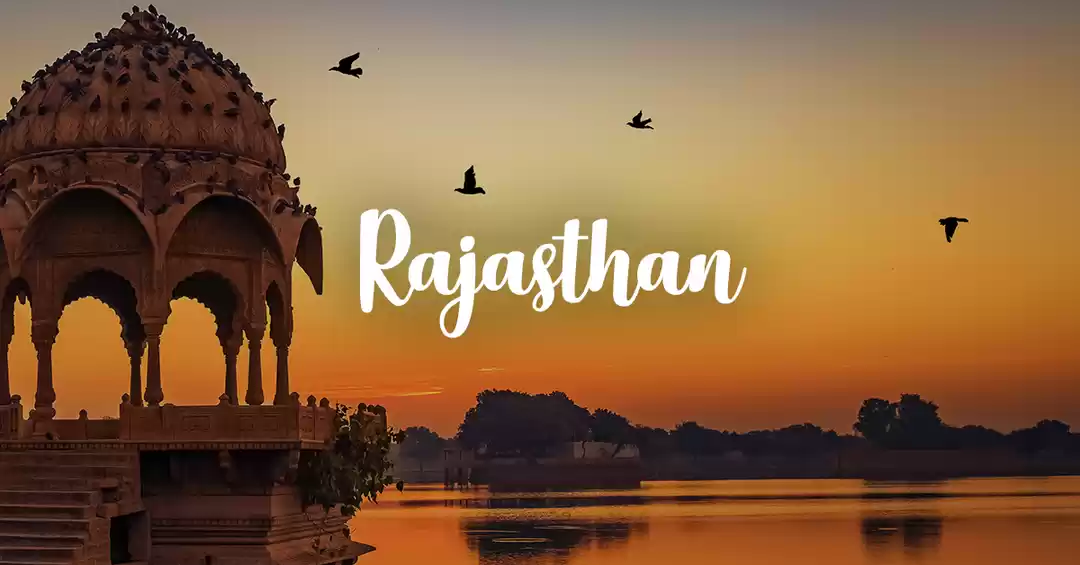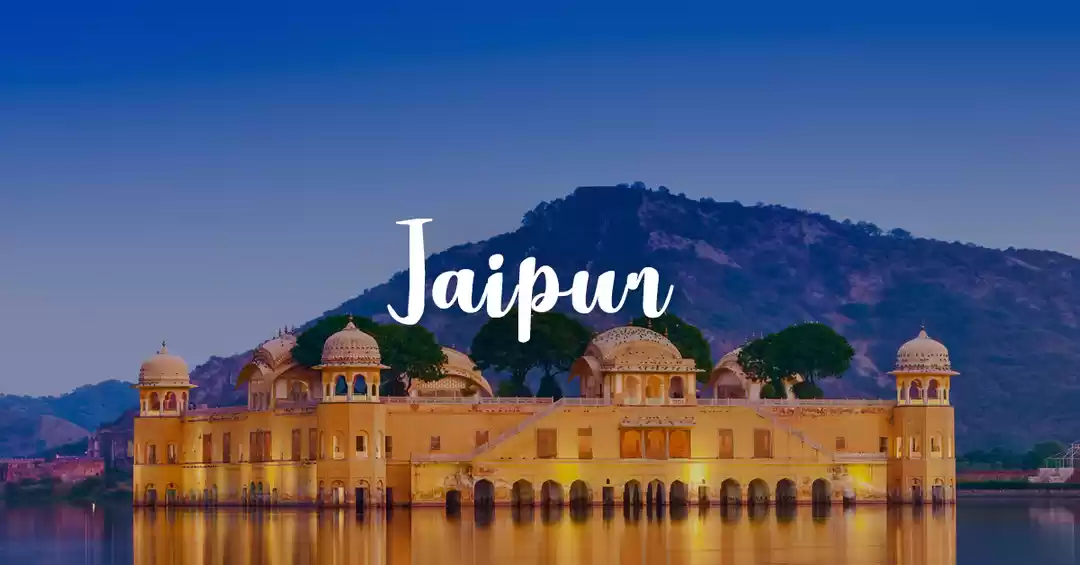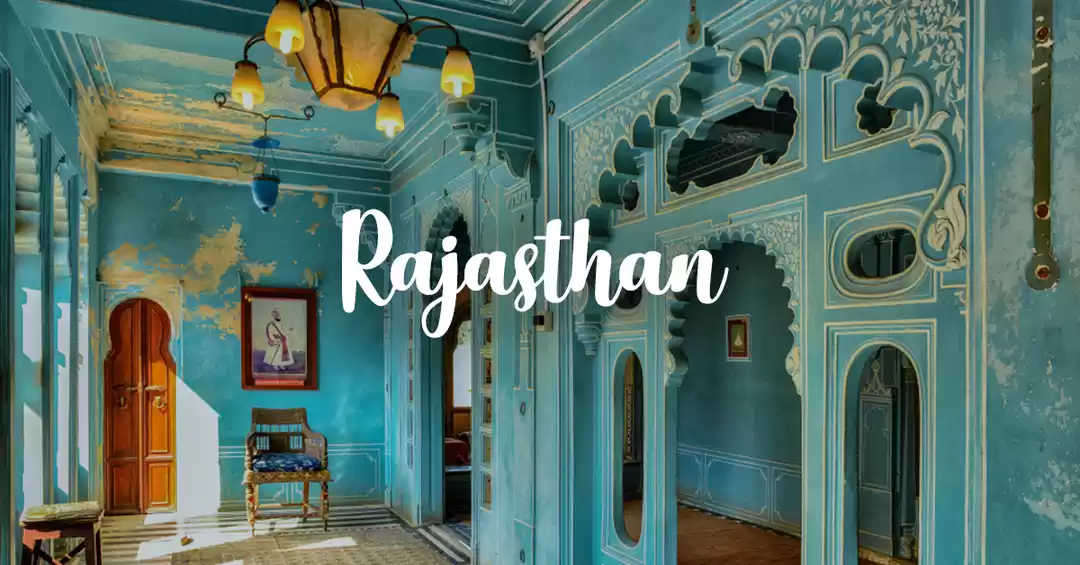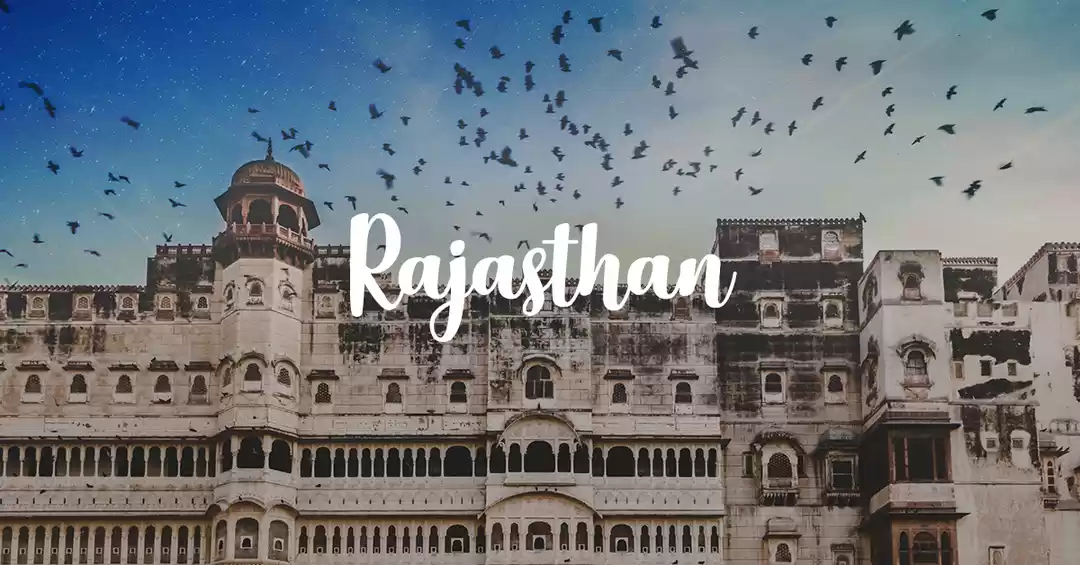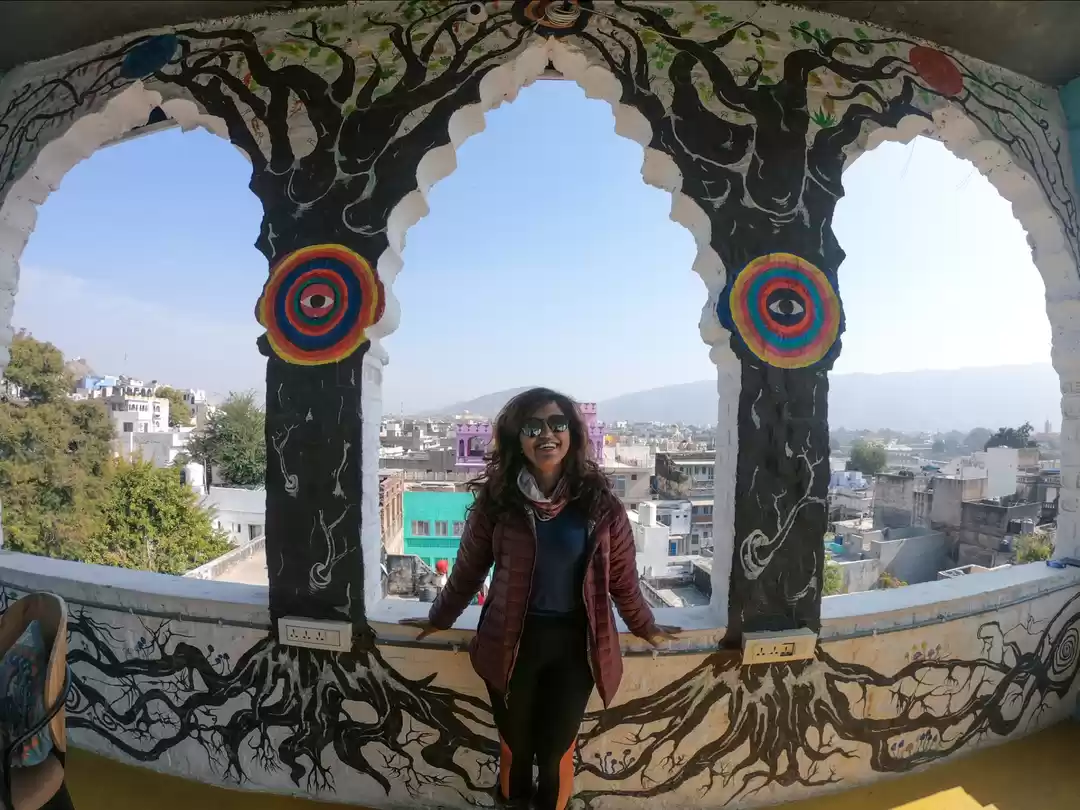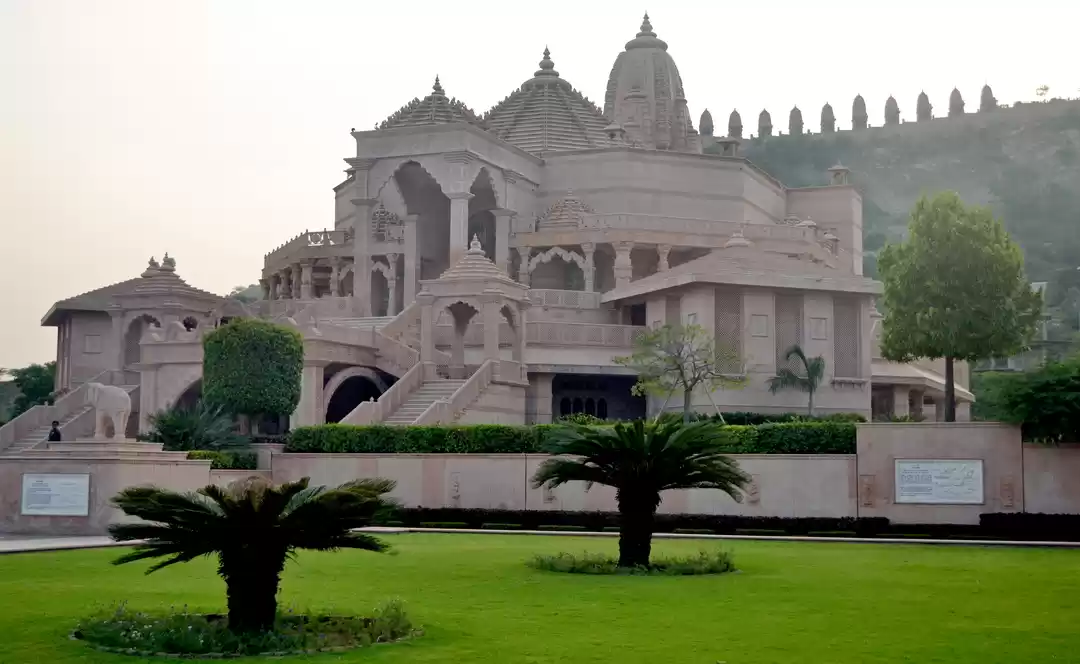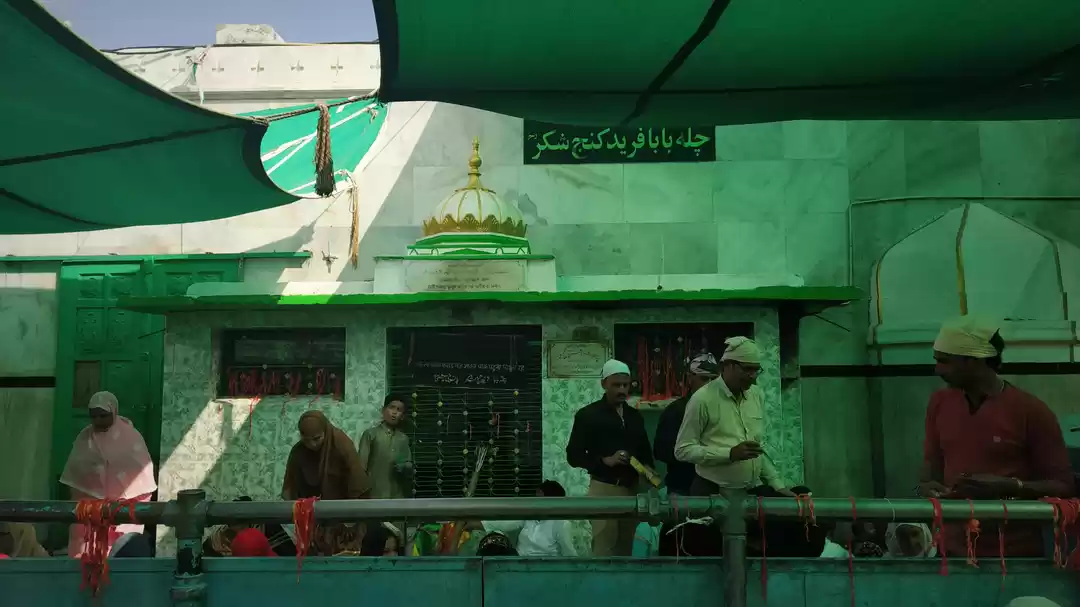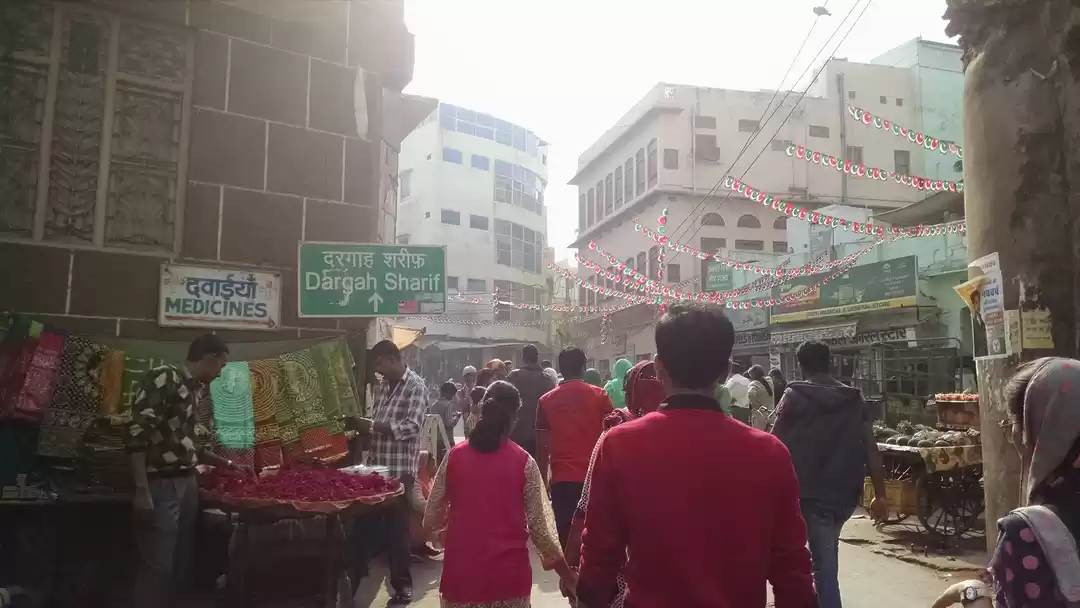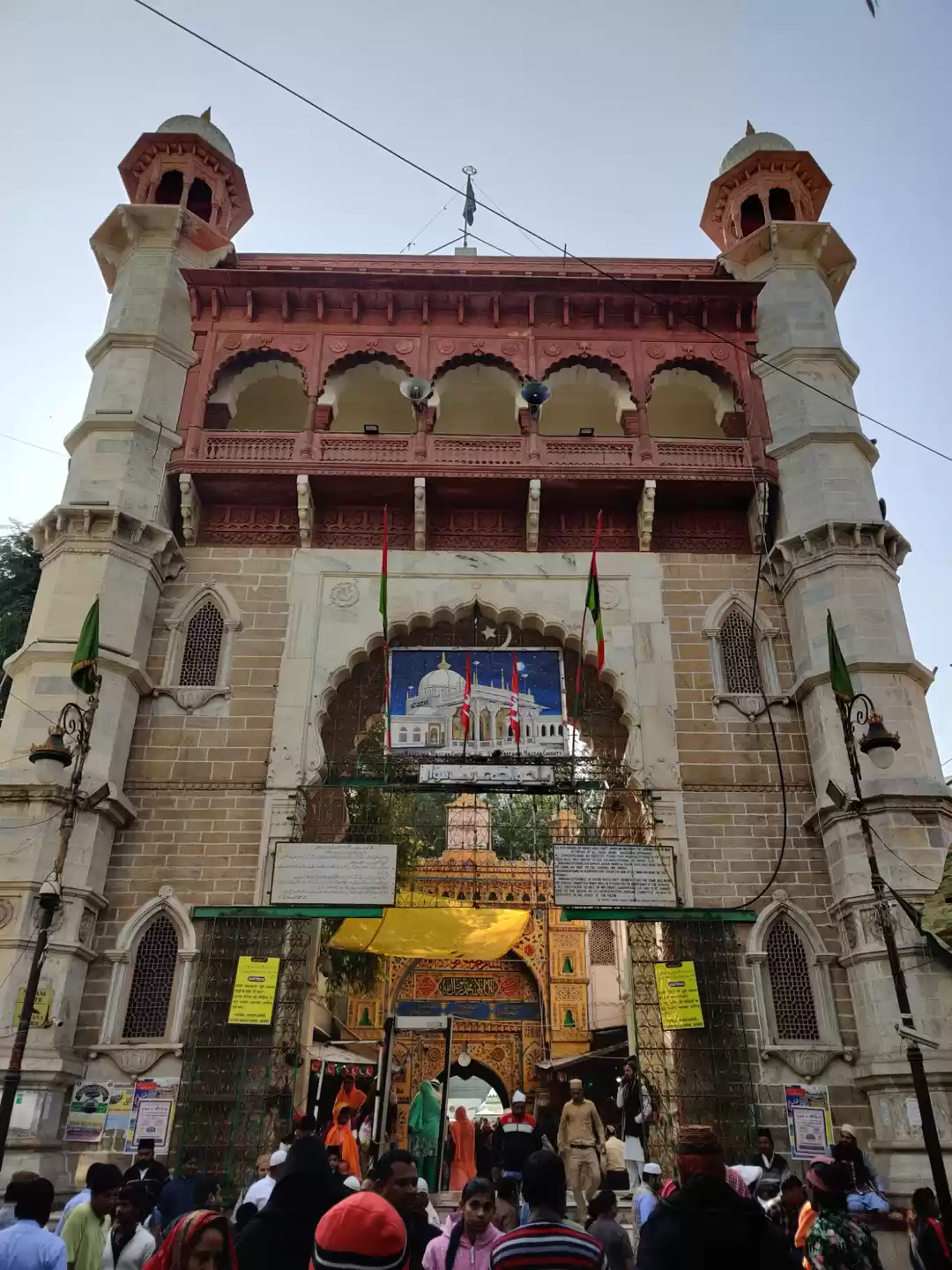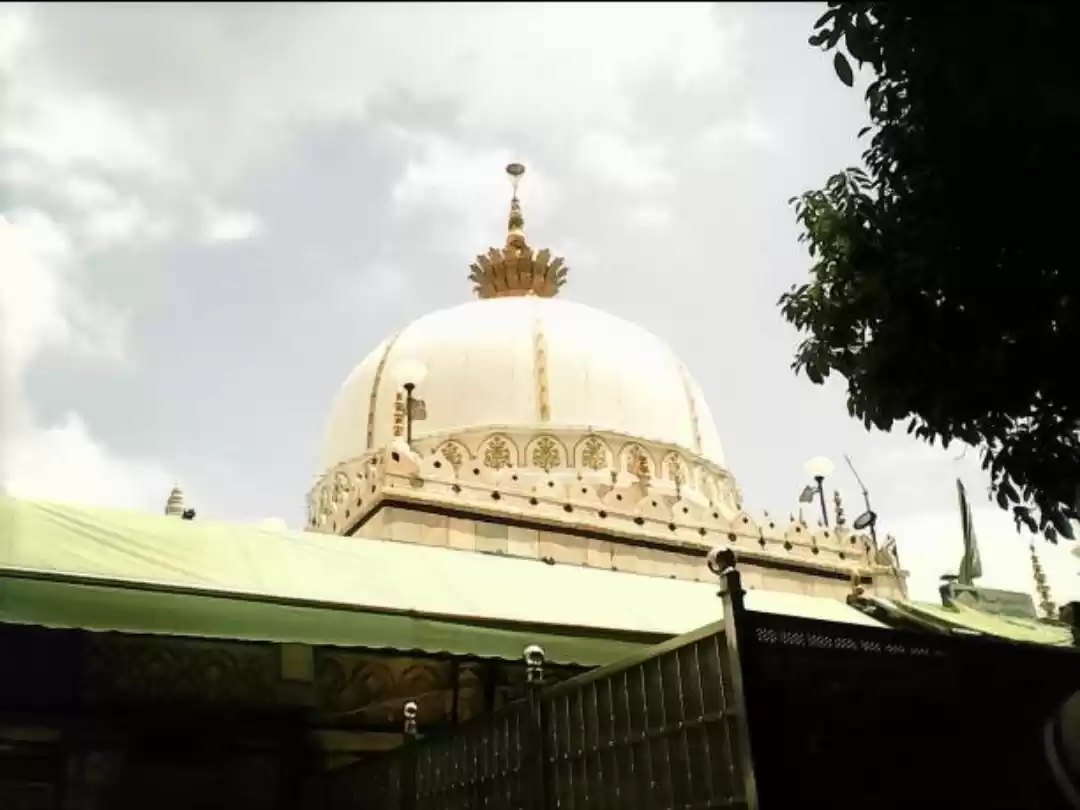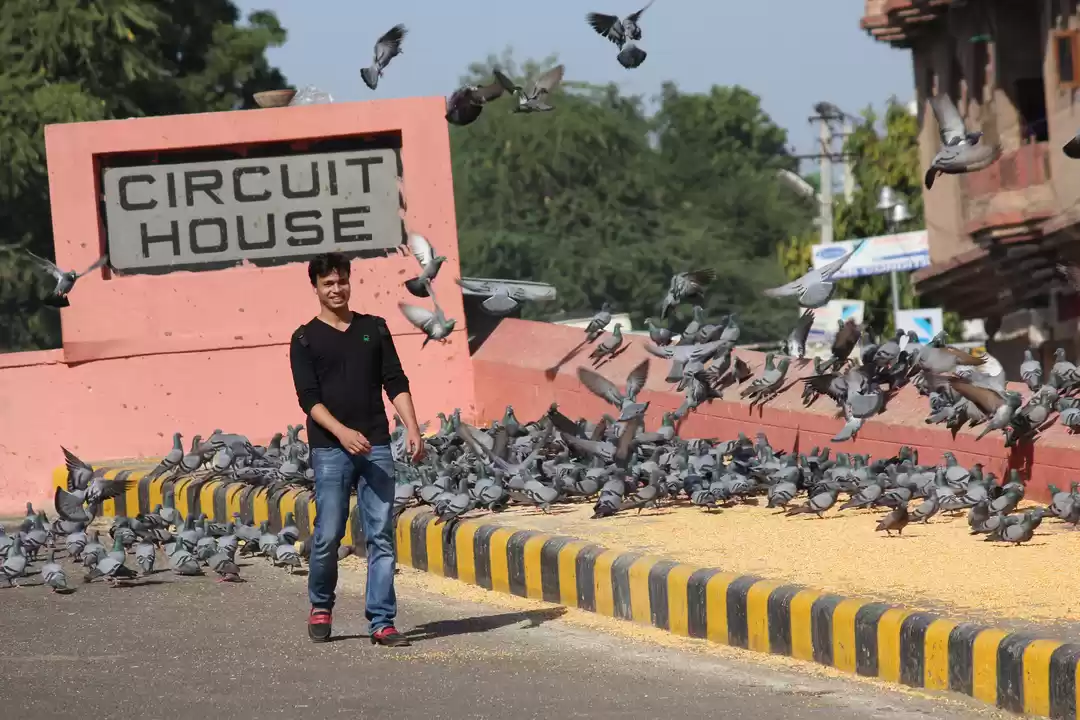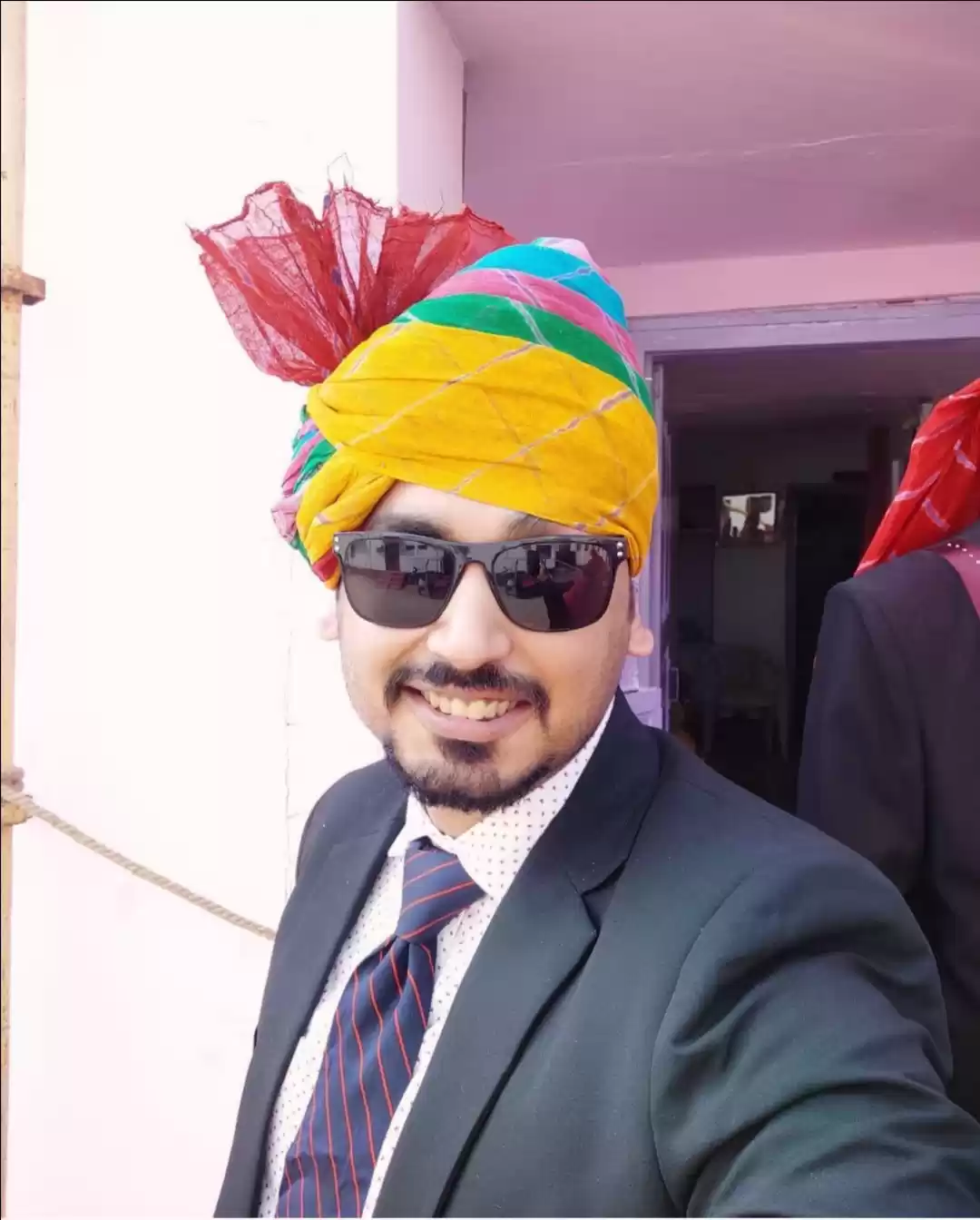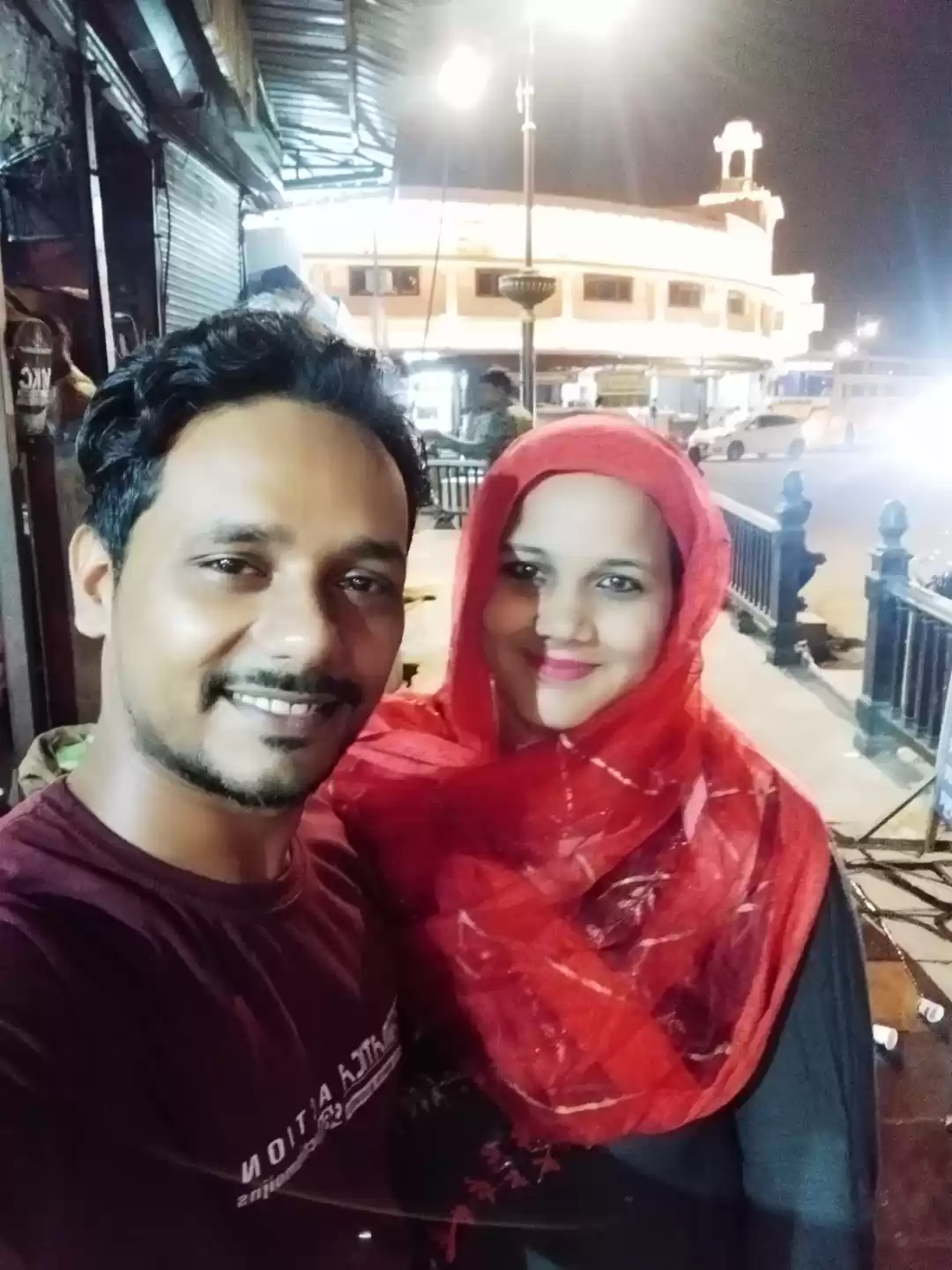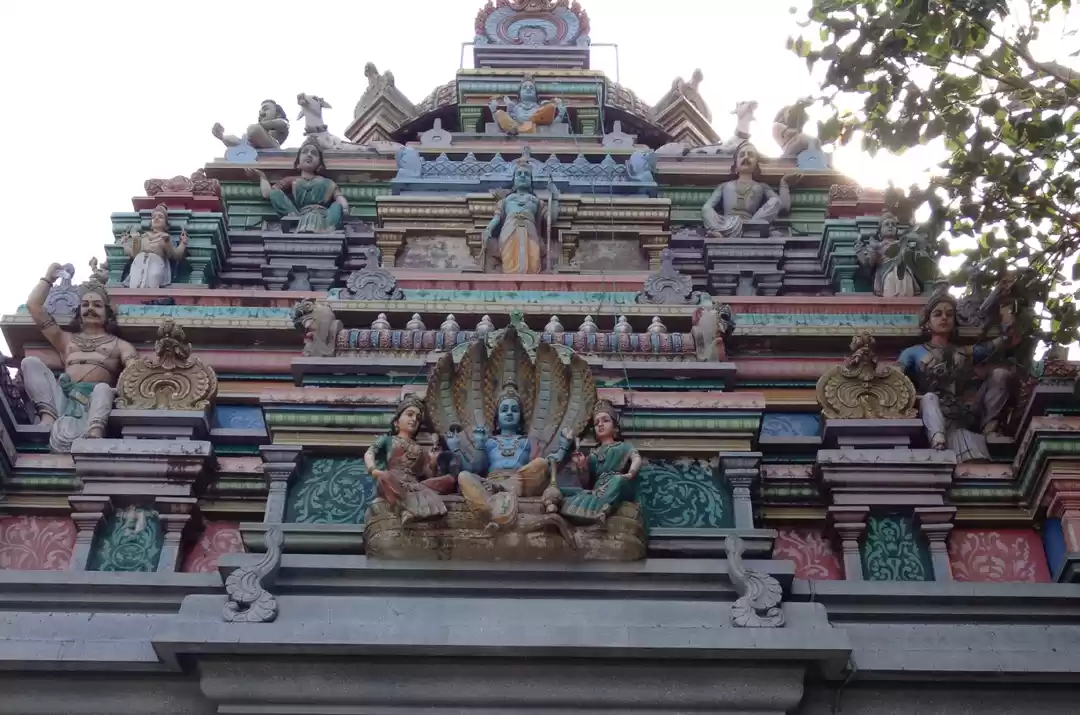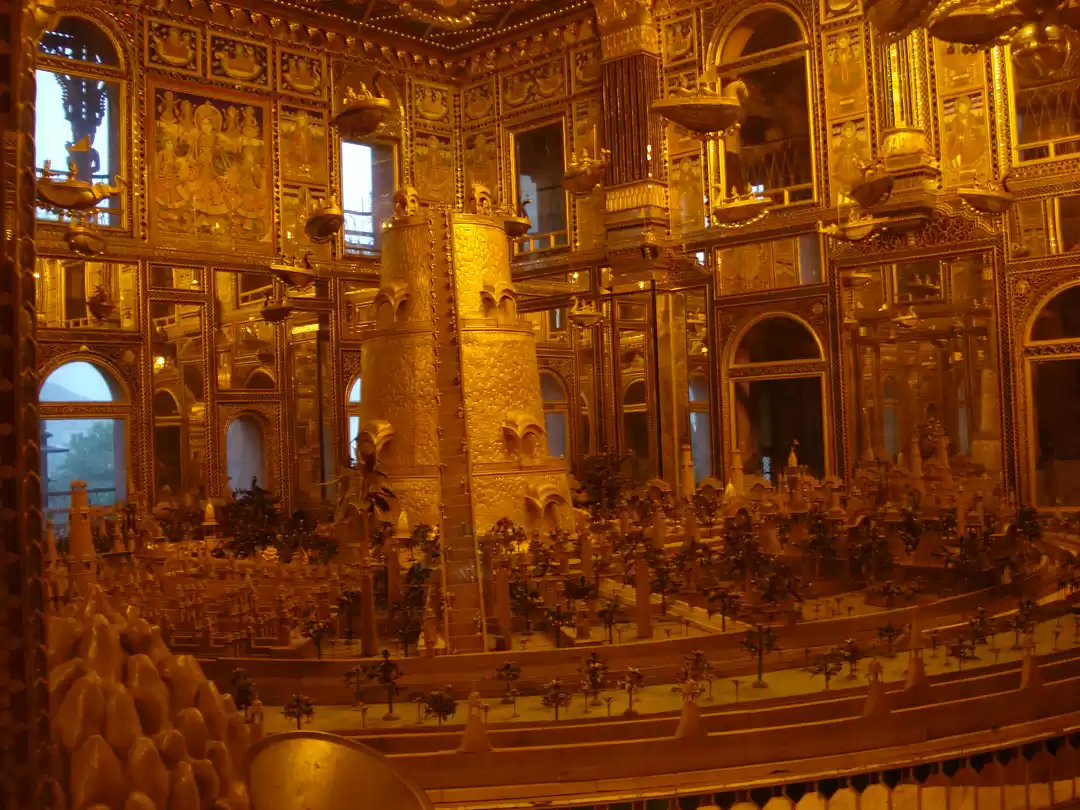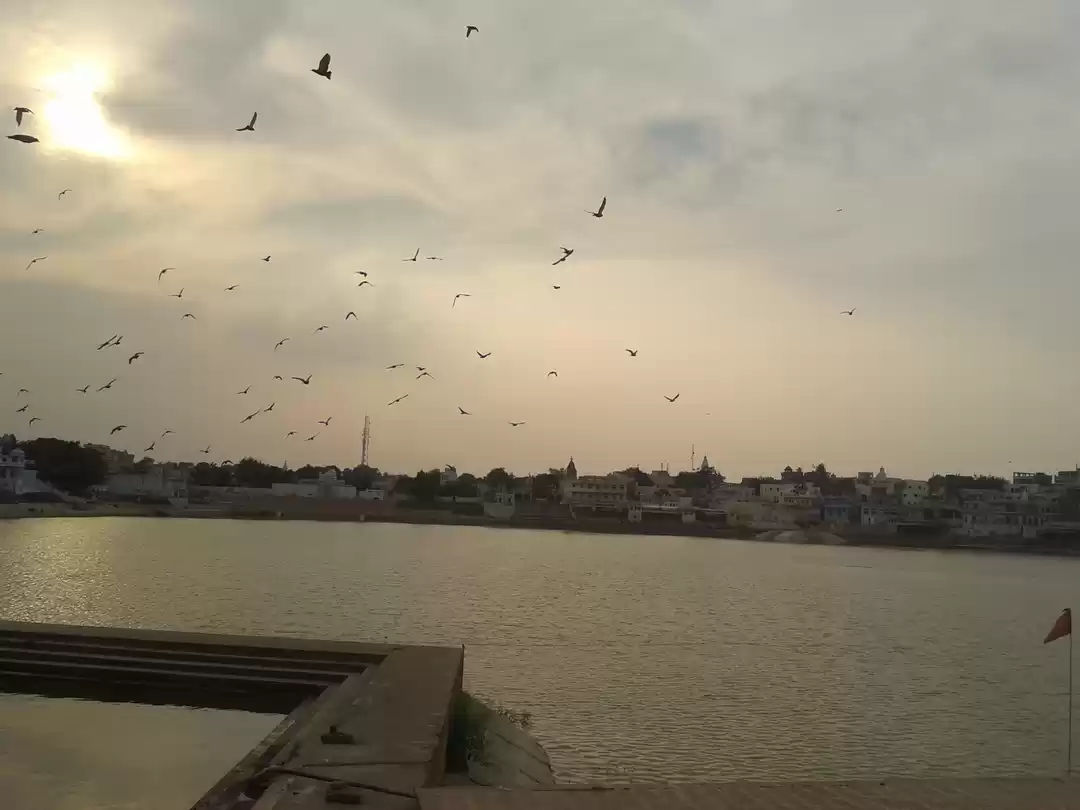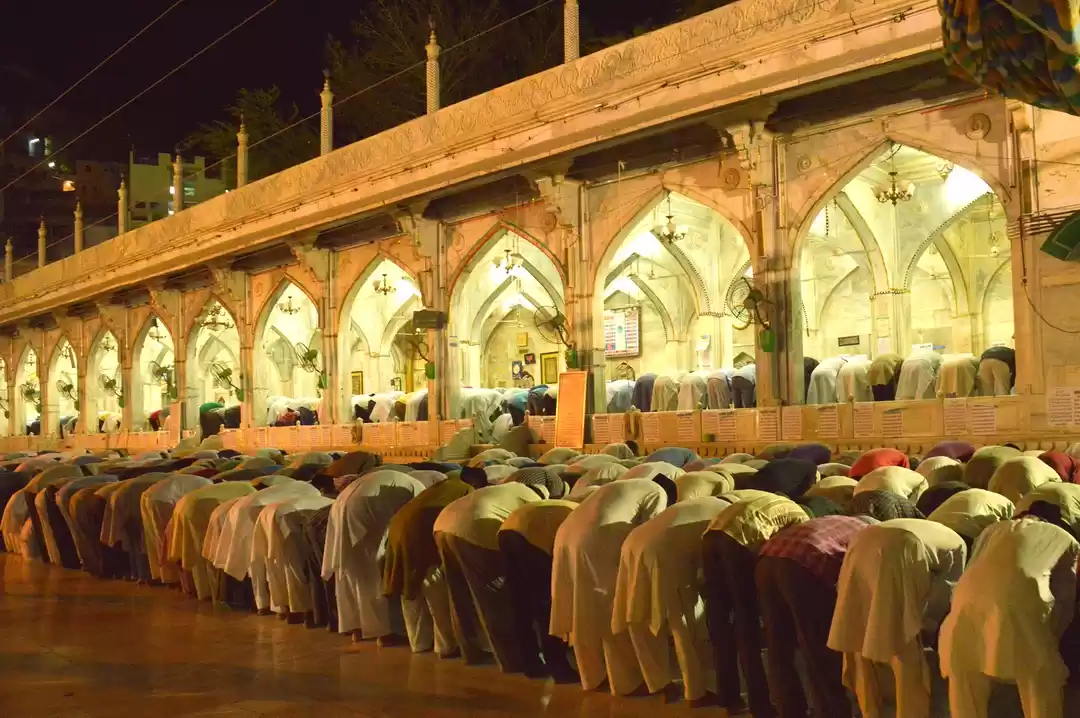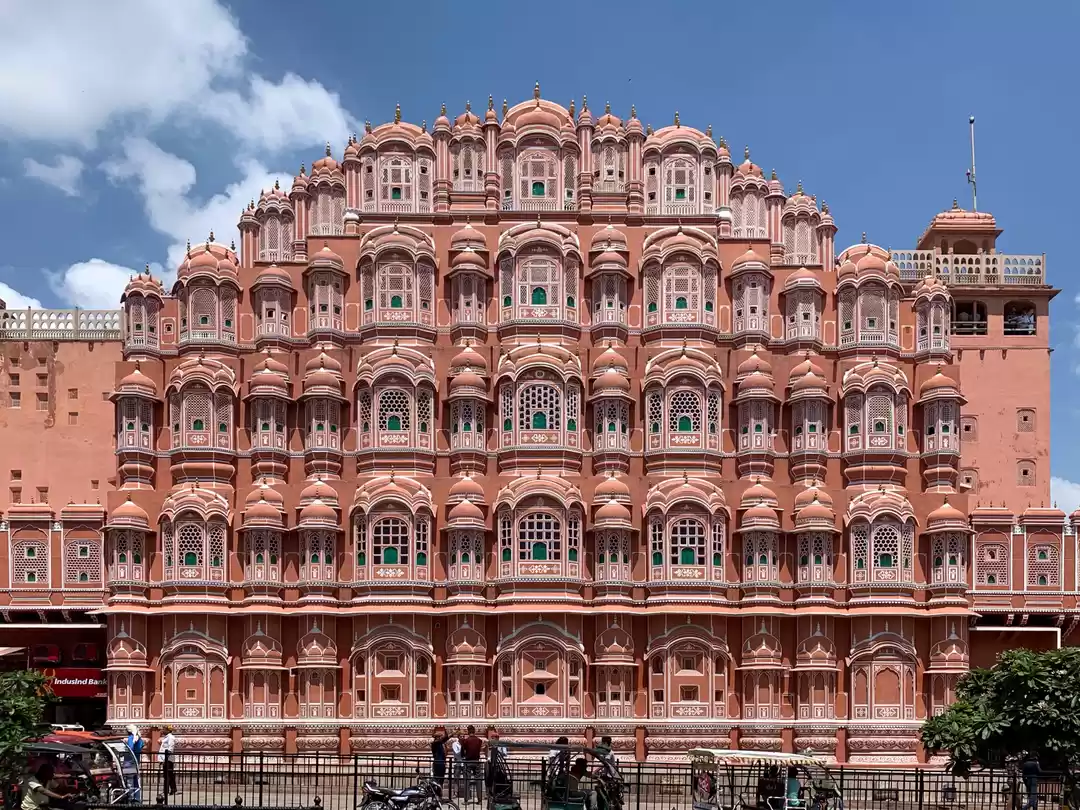
My Exploration of Pushkar Town ended with beautiful memories (Refer to my previous Articles - "Across #Rajasthan - I (Pushkar)". I woke up afresh and got ready for the second day of my trip, and this time to the Historic City of Ajmer. Now, the very important aspect to be understood is that, Pushkar is actually a satellite town to the Larger Ajmer City, lying only around 15 KM apart. Like I described earlier, Pushkar can be accessed easily from Ajmer by means of public transport. The same happens to be the case when you are travelling towards Ajmer from Pushkar. There are buses and minivans available throughout the day at spans of 15-20 mins. So after a Hot Breakfast of Puri Sabzi at Pushkar Market, I proceeded towards the bus stand. I was lucky that a Bus was almost ready to ply towards Ajmer. So I boarded it along with a bunch of friendly locals, from whom my only complaint is that most of them were not wearing mask and social distancing was not maintained, keeping in mind that we were still amidst the Covid-19 Pandemic. Anyways, after a bumpy yet picturesque ride in middle of awestriking Aravalli Mountain ranges, and the rocky valleys across which our bus cut through, I reached the Historical Ajmer City.
A little about the history of the city, it derives its origin in the 7th Century, when it was founded by King Ajaipal Chauhan. The City is located at the foot of the imposing Ajaya Meru Hill, from which its etymology can be traced. Ajmer reached its historic pinnacle during the reign of Mughal Emperor Jalaluddin Akbar, and the later Mughals due to the fact that Ajmer was the location of the Ajmer Shariff Dargah of Sufi Saint Moinuddin Chisti, and hence a sacred pilgrimage site for Muslims. Due to the Mughal influence, Ajmer is bestowed with several Mughal Imperial sites, along with many other archeologically important sites.
So, I began my exploration of the city from Ajmer Bus Station. As I coordinated my day, my first stop was going to be the Monument of Adhai Din ka Jhopra, a massive gateway which starts the climb towards Taragarh Hill and Fort. Catching a rickshaw from the bus station, I reached my destination in 45 minutes, navigating through the bygone narrow lanes and crevice like gullies of Old Ajmer.
The Adhai din ka Jhopra, is perhaps one of the most sad revisit to History and a peek into the brutal invasion of India. Originally an Ancient Sanskrit School, and a Temple, during Mohammed of Ghor's invasion of India, and after the defeat of Prithviraj Chauhan. During the period of Chauhan dynasty, there was a Sanskrit college built by Vigraharaja IV, also known as Visaladeva, who belonged to Chauhan dynasty. The college was built in square shape and a dome-shaped pavilion was constructed on each corner of the building. A temple was also there that was dedicated to Goddess Saraswati. The construction of the building includes the features of Hindu and Jain architecture. The Sanskrit college was also center of Learning of the Jains. The local people say that Seth Viramdeva constructed the college to celebrate Panch Kalyanaka. Mohammed of Ghor invaded India for the second time and defeated and murdered the valiant Prithviraj Chauhan III in the Second Battle of Tarain. Thereafter, started a ravaging, ransacking and murder of Hindu Temples and Hindus by the Invaders. After defeating Prithvi Raj Chauhan, once Mohammad Ghori was passing by Ajmer and saw the numerous temples so he ordered demolition of each and every temple and construct Islamic Centers, and also construct a mosque so that he can offer prayers. The sultan also ordered that the mosque has to be built within two and a half days. A screen wall where the sultan could offer his prayers was thus constructed within the remains of the Sanskrit School, while the Saraswati Temple was completely demolished. The mosque was completed in 1199 according to an inscription. Iltumish, the successor of Qutbuddin Aibak, built a screened wall with arches and inscriptions on it. The inscriptions have the name of Iltumish and the supervisor named Ahmad ibn Muhammad al-Arid. The remnants of Hindu Temple Architecture is very much evident within the insides of the Adhai Din ka Jhopra, and the Temple dome and arches, pillars which stands even today, gives a painful picture of the destruction.
I spent about half an hour in the complex of this great monument, once a great sanskrit school. I paid my respects to the Dargah Shrine which now occupies the sanctum sanctorum of the once upon a time Temple as I moved out. After spending enough time in the shaded respites of the Bazaar thronging near the dargah, I decided to make a move towards my next destination, the massive Fort of Taragarh situated above the mighty Taragarh Hill from where it derives its name. There are many ways to reach the hill top. If you are someone who loves physically challenging treks, then the trail to the hill starts right behind the Adhai din ka Jhopra. Or, you can like I did, jump into a shared taxi, which will charge you around 100 rupees for a two way trip up the hill and dropping you at a choice location after ascending down. So, unlike other fortifications in India, Taragarh fort doesn't have much of architectural marvels to offer. Rather it has the Taragarh Dargah atop the hill for devout Muslims, and other visitors who might wanna visit. I chose to rather survey the ancient ramparts of the Fortifications, which offered a 360 degree birds eye view of the Ajmer city. The view is indeed breathtaking. Taragarh Fort was built in Ajmer during the rule of the Chauhan Kings. The history of this fort dates back to the 1300's. Although it was constructed by the Chauhans, it was also used as an important military base during the reign of the Mughal Empire. When the British came to power, the fort was converted into a sanatorium. Although you might find most part of the fort in ruins today, you will still find yourself in appreciation of the impressive mastery in its work and the view of the city it offers.
Time passes like sand in your open palm, when you are deeply engrossed in beautiful views. I didn't ever realize that it was almost 1:30 PM in the afternoon, and my stomach was rumbling of hunger. The light breakfast I had in Pushkar while leaving carried me on till now, but it's high time I fill myself up for lunch. So I started searching for eateries in the Hill Top. Just right beside the dargah was a restaurant which looked impressively popular, and was serving an array of food to people and pilgrims visiting the Dargah. So, I seated myself in the restaurant and ordered some Mutton Nihari and two pieces of Khamini Roti (An Persian-Indian Flatbread). Noww before I dwelve into the taste, let me surprise you all with the price. The price of the food was so much cheap that it almost shocked me. All that meal just cost me Rupees 50 (around 0.6$). Coming to the taste, it was one of the juiciest Nihari I ever had in my life and the softest khamini roti. Also I must mention, Mr. Khan or more popularly known as Khan Sahab around the dargah, the manager of the small yet surprisingly amazing eatery, was very warm, courteous and friendly in recieving his guests. Having finished my meal and a satisfied stomach, I decided to ascend down the Hill towards the city center. I asked my driver, Mr. Alam to drop me right in front of the Ana Sagar river front, the beautiful place to have a peaceful time and stroll along the Ana Sagar Lake of Ajmer.

As we drove down the hill, I bid goodbye to the Hill fort and thankful for the beautiful view and the hearty meal it provided. It was now time to take a refreshing stroll around the Ana Sagar lake front. It was indeed a rewarding time spent at the front and the Anasagar chopati. Walking along the Road to the Lake, I started moving towards the next destination. A very important and historically significant place, The Akbari Fort or Akbar's Fort, now turned into Ajmer Government Museum. This fort was once a residence and outpost of emperor Akbar, who often visited Ajmer for a visit to the Ajmer Shariff Dargah. Also, Ajmer was an important military outpost of the Mughal Army, and a basecamp for launching invasions across the Rajput heartland. It was later used by Prince Salim (Later Emperor Jehangir) as residence. A very stark significance of this place in Indian History is that, this was the exact place where Emperor Jehangir granted permission to Sir Thomas Roe to set up the British East India company, which would later go on to swallow Indian Subcontinent under its subjugation. The Fort has now been converted into a museum, since 1908. When I visited the place, the renovation work inside several rooms of the fort was still being undertaken. The Museum has a wide array of display of ancient articles, weapons, armor, crockeries, utensils, clothing, fabrics and ancient Indian sculptures and idols.




The visit to the Akbari fort was completed in an hour, and especially with the sun glaring down in its prime, it was hard to stay under the influence of the sun for much longer. As I exited the Fort, I saw another building which stages the National Film Archives for which tickets can be found in the same counter as that of the fort. But due to constraints of time I decided to keep this for the next time. I really needed to re-energize myself before moving on, so I quickly grabbed a glass of cool lemon soda from a stall nearby. I felt the soul returning back to me. I sat and rested a while before making a move on. On the way I made a quick visit to a beautiful architectural masterpiece, the Soniji ka Nasiya, a Jain ornate Temple. The prime attraction of the Temple is a chamber called "Swarn Nagri" or the City of Gold, which depicts the key features and belief system of Jainism. The beautiful depiction of a modular golden city will stun you. With most of the sites around Ajmer covered, I decided to head back towards Anasagar Lake front, where after a short while of rest and spending a relaxing evening, I headed towards Ajmer railway station.

My time in Ajmer-Pushkar was a short one, of one day each. But the rich culture of the city, which i could experience in such a short time was beautiful, rewarding and made me much knowledgable than I was before. And the fact that this city, hoists important pilgrimage sites of both religions, Ajmer Shariff Dargah in Ajmer and Pushkar Brahma Temple in Pushkar, makes me much happier to realize the beautiful unity in diversity of my Country. As I climbed the train departing Ajmer towards my next destination Jodhpur, a story for another time, I solemnly pledged that i am definitely coming back to this beautiful place, someday soon.



